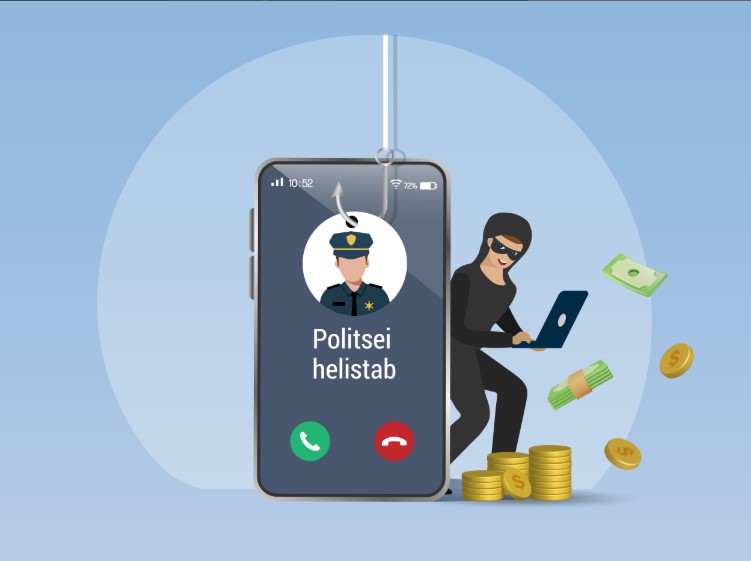
Common scams
Every year, Estonian individuals and businesses lose millions of euros due to cybercrime. Cybercrimes are mostly carried out for financial gain, but the motives can also include political reasons, hacktivism, revenge, or insider attacks. Fraud accounts for the largest share of cyber incidents. To avoid becoming a victim of fraud, learn to recognize different scam schemes!
Were you a victim of fraud?
Please help warn others and catch criminals so they could do no more harm. For this, please inform the police of the incident at cyber.politsei.ee, as well as the Incident Response Department of the Information System Authority by emailing cert@cert.ee.

Scam calls
Scam calls have become the most prevalent type of fraud, causing Estonian residents to lose tens of thousands of euros every day. Read more about how to recognise scam calls and what to do if you suspect a scam.

Phishing
Phishing for credit card details, internet bank credentials, and access information for important accounts to later use them for future attacks or for stealing money.

Investment fraud
Every year, millions of euros are swindled from people living in Estonia through investment fraud. Find out how to spot scams and avoid becoming a victim.

Fraud in online marketplaces
Scams spreading on different online trading platforms (Facebook Marketplace, Yaga, eBay, and others):
- organised and automated scams that attempt to obtain a user’s credit card details or bank account access information;
- sale of non-existent goods – by organised scammers on a wider scale or by individual fraudsters.

Banking and credit card fraud
Various methods are used for obtaining the money in the victim’s bank account (and also for taking out payday loans), credit card details (where the limit is used up) or gaining full access to the bank account (using the account for money laundering).

Extortion
Extorting money or sensitive materials from a user by threatening to disclose the private information of the user (for example, semi-nude photos, adult website usage information, ‘a video recorded with a computer camera’, or similar). Often, the perpetrator does not actually have such material, but they play on the fear that they might have it.

Attacks against businesses
Various scams targeting companies and organisations, such as ransomware attacks, recruitment scams, CEO scams, invoice fraud.

Ransomware attacks against businesses
Ransomware has become one of the biggest threats to all internet users. Attackers infect the system with malware designed to encrypt or steal the files of the victim. After encryption, attackers try to charge the victim for restoring access to files or for not disclosing information. Such attacks can be very successful, especially in corporate networks where file servers are widely used.